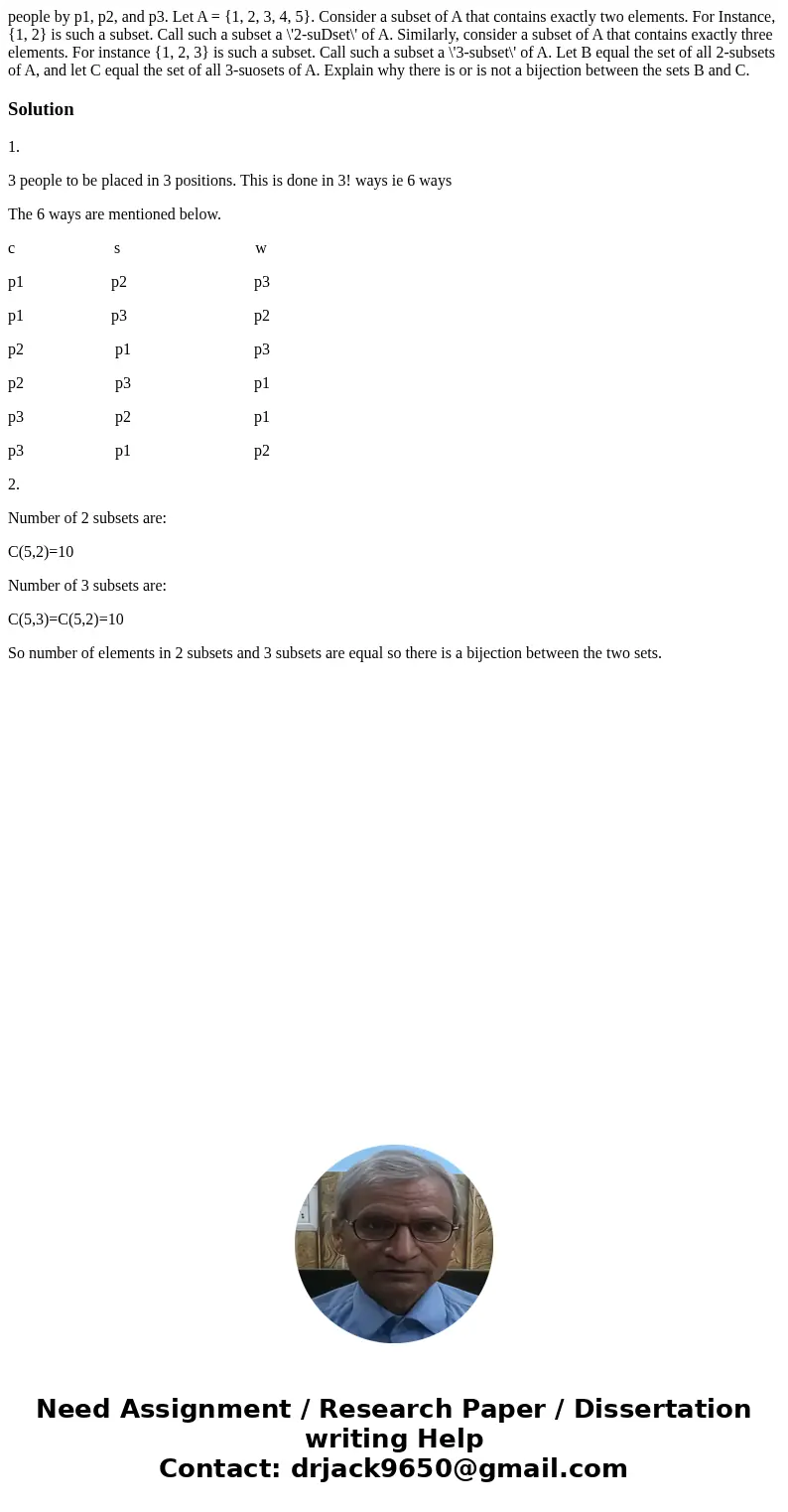people by p1 p2 and p3 Let A 1 2 3 4 5 Consider a subset of
people by p1, p2, and p3. Let A = {1, 2, 3, 4, 5}. Consider a subset of A that contains exactly two elements. For Instance, {1, 2} is such a subset. Call such a subset a \'2-suDset\' of A. Similarly, consider a subset of A that contains exactly three elements. For instance {1, 2, 3} is such a subset. Call such a subset a \'3-subset\' of A. Let B equal the set of all 2-subsets of A, and let C equal the set of all 3-suosets of A. Explain why there is or is not a bijection between the sets B and C.
Solution
1.
3 people to be placed in 3 positions. This is done in 3! ways ie 6 ways
The 6 ways are mentioned below.
c s w
p1 p2 p3
p1 p3 p2
p2 p1 p3
p2 p3 p1
p3 p2 p1
p3 p1 p2
2.
Number of 2 subsets are:
C(5,2)=10
Number of 3 subsets are:
C(5,3)=C(5,2)=10
So number of elements in 2 subsets and 3 subsets are equal so there is a bijection between the two sets.

 Homework Sourse
Homework Sourse